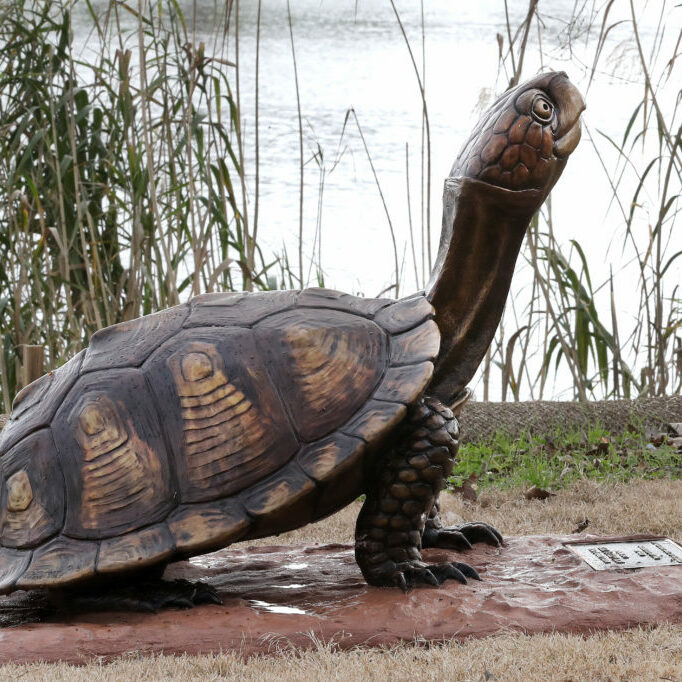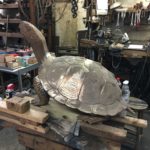Box Turtle II
Box Turtle II was cast in silicon bronze in the artist’s personal foundry, which he has operated with his father since 1983. Turtles are another animal that features widely in traditional art and mythology. In India, and among east coast Native American tribes, such as the Iroquois and Lenape, a giant turtle or tortoise is part of their creation story, carrying the Earth on its back. In cultures where turtles are traditionally eaten, their shells are often used as bowls and are decorated or carved. Notice the detail on this turtle’s shell and the expression on its face. What do you think the artist is expressing about this ancient creature?
By David Turner
The artist, David Turner, has been a professional sculptor for 35 years, during which he has made over 60 large public commission sculptures at zoos, museums, aquariums, universities, and municipalities throughout the United States. David works from his own foundry with his father, Bill Turner, on the Eastern Shore of Virginia. They are inspired by the wildlife of the Chesapeake Bay. They have over 100 public sculptures in many famous places and one of their sculptures was owned by former President George H.W. Bush.
View all sculptures by this artist.Donated By
Fran and Rick SheltonDid You Know?
- Box turtles are native to the United States and Mexico.
- Box turtles eat poisonous mushrooms and retain the toxins inside of their body so their flesh may induce poisoning of humans.
- Box turtles have a soft shell until they hit the age of 7 years old.
- These turtles are omnivores, and their diet mainly consists of slugs, worms, insects, berries, eggs, and roots.
- During the heat of the day, box turtles hide in mud, under decaying logs, or in abandoned burrows.
- In the wild, box turtles can live over 100 years old..
- While the male box turtle is larger than the female, it is pretty difficult to tell the difference by size alone. The way to tell the difference is in their eye color! Males have red eyes and females have yellow-ish brown eyes
- Several species of turtle are critically endangered because they tend to rely on very specific habitats and become threatened if those habitats change.
Location




